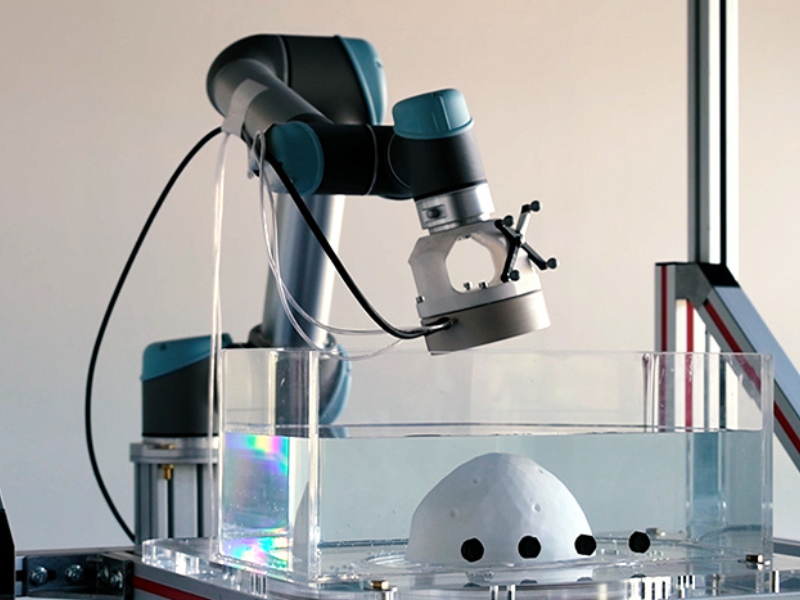More effective treatment of serious brain diseases without compromising patient safety
The blood-brain barrier (BBB) protects our brains. But it also keeps therapeutic drugs from reaching areas of the brain affected by diseases. TheraSonic’s transcranial focused ultrasound technology makes the BBB permeable long enough to improve drug delivery to the brain. This will create new treatment options for serious brain diseases, starting with cancer.

Focused ultrasound beams for non-invasive intracerebral drug delivery. CEA-Joliot
TheraSonic’s technology was developed over fifteen years of research at the CEA and CNRS. It is protected by two CEA patents and one co-owned patent (also with the CEA). The principle behind the solution leverages the clever combination of focused ultrasound beams and gas microbubbles to make the layer of endothelial cells where the BBB is located permeable long enough to administer drugs.
Because the ultrasound dose is monitored and adjusted in real time, this non-invasive technique is safe and efficient, as it has been demonstrated in animal models. Drug delivery can be precision-targeted, and several areas of the brain can be treated in just a few minutes—ideal for outpatient treatment.
The startup will initially commercialize the solution for brain cancers, including metastatic brain cancer, which has a median life expectancy of just over a year. TheraSonic raised €1 million in 2024 and plans to release its first product, which will be sold to cancer centers and hospitals, in 2031. One of the two founders is a CEA employee, and the venture was supported by the CEA’s Magellan startup incubator. Continued R&D will take place in a joint lab with the CEA.
Key figure: 5
TheraSonic technology improved the administration of monoclonal antibodies to the brain for cancer treatment fivefold in animal models.
Targeted Markets:
- Neurological oncology
- Parkinson's disease
- Rare genetic diseases
Technologies used:
- Transcranial focused ultrasound
- Acoustic cavitation for personalized real-time ultrasound dose monitoring
- Neuronavigation to guide the ultrasound beam
- Cobotic assistance for targeted drug administration
Year founded: 2023
CEA Institute: CEA-Joliot